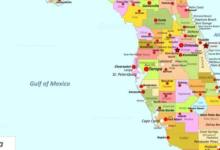Outline:418nuvo8ttg= Australia Political Map

The “Outline:418nuvo8ttg= Australia Political Map” serves as a crucial tool for understanding the complexities of Australia’s governance, encompassing its six states and two territories. This map not only delineates geographical boundaries but also highlights the intricate relationship between regional interests and national unity. As we explore the electoral processes and the current political landscape, it raises pertinent questions about how these factors influence policy-making and public sentiment. What implications do these dynamics hold for the future of Australian democracy?
Overview of Australia’s Political Structure
How does Australia’s political structure reflect its historical and cultural context?
Australia’s federal governance, rooted in the British parliamentary system, demonstrates a commitment to democratic principles and representation. This framework accommodates diverse regional interests while fostering unity.
The historical influences of colonization and evolving societal values shape the interaction between federal and state authorities, highlighting a dynamic balance between centralized power and local autonomy essential for freedom.
States and Territories Explained
Australia is comprised of six states and two territories, each possessing distinct governance structures and responsibilities that reflect the country’s federal system.
The state capitals serve as political hubs, where decisions influencing local and national interests are made.
Territorial governance, while less autonomous than states, plays a crucial role in managing resources and services, ensuring that both regions contribute effectively to Australia’s diverse socio-political landscape.
Electoral Processes and Boundaries
While the complexity of Australia’s political landscape is underscored by its federal structure, the electoral processes and boundaries play a pivotal role in shaping representation and governance.
The country employs preferential voting systems, ensuring diverse political voices are represented.
Additionally, electoral boundaries are periodically redrawn to reflect demographic shifts, maintaining equitable representation and ensuring that the democratic ideals of freedom and fairness are upheld.
Read Also Outline:79gcnmgouae= Africa
Current Political Issues and Trends
A myriad of current political issues and trends in Australia reflects the evolving landscape of public sentiment and policy priorities.
Indigenous rights continue to gain traction, urging systemic reforms, while climate policy debates intensify amid increasing environmental activism.
Concurrently, economic reforms are necessary to address post-pandemic recovery, and immigration debates challenge national identity, revealing deep divisions within the electorate regarding inclusion and diversity.
Conclusion
The intricate Outline:418nuvo8ttg= Australia Political Map encapsulates a complex federal system where states and territories coexist, each with unique governance. The interplay of electoral processes, such as preferential voting, alongside ongoing boundary adjustments, reveals the dynamic nature of the political landscape. Current issues reflect broader socio-political trends, highlighting the delicate balance between regional interests and national unity. Ultimately, the map serves not merely as a geographical representation but as a lens through which to understand Australia’s evolving democracy.





